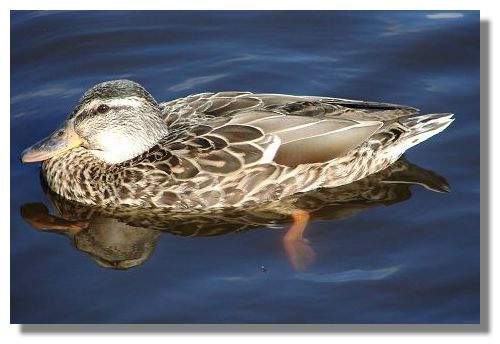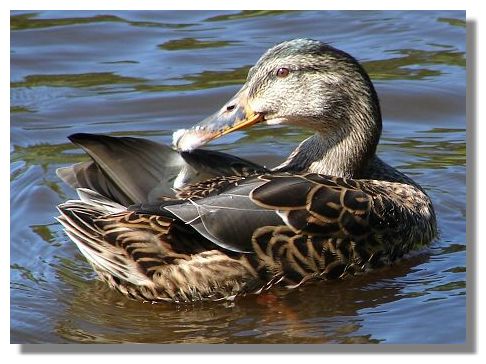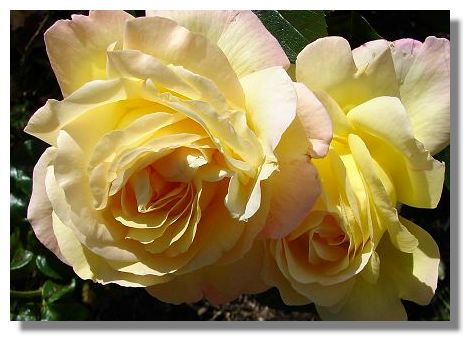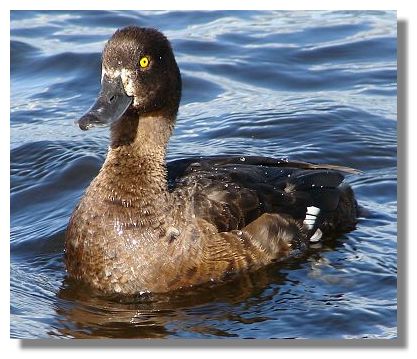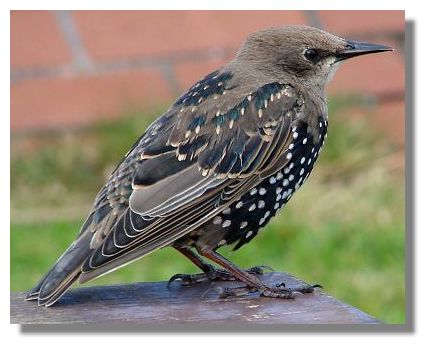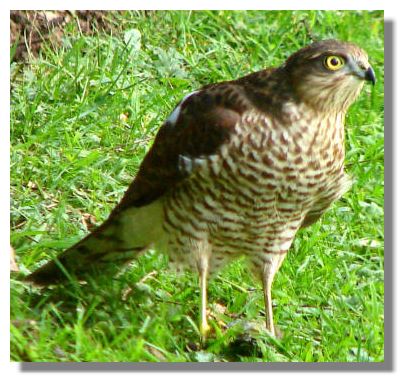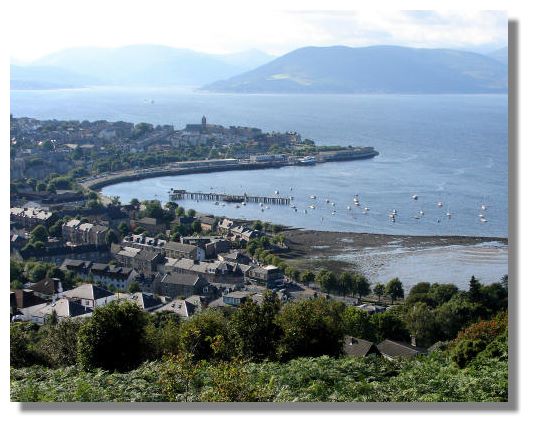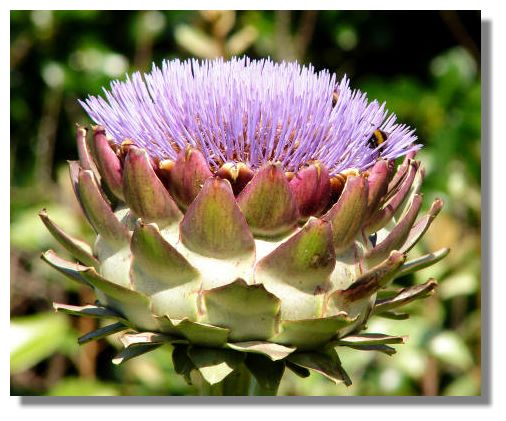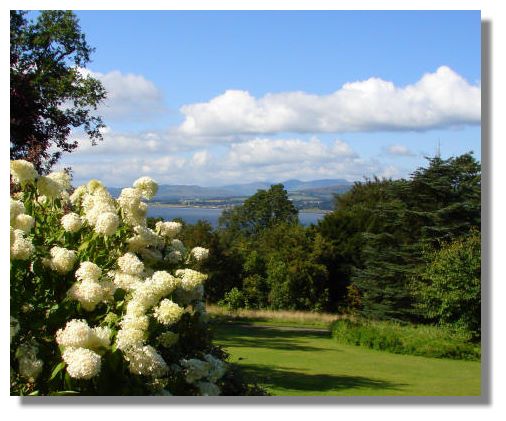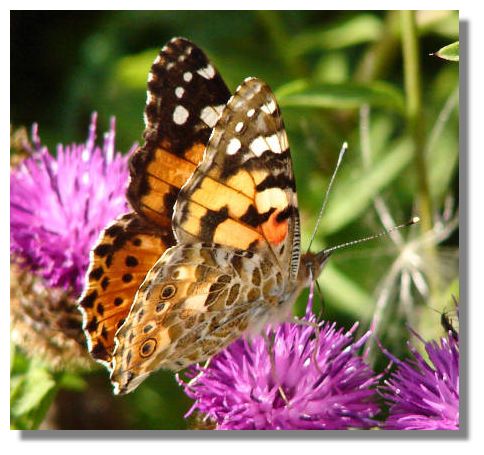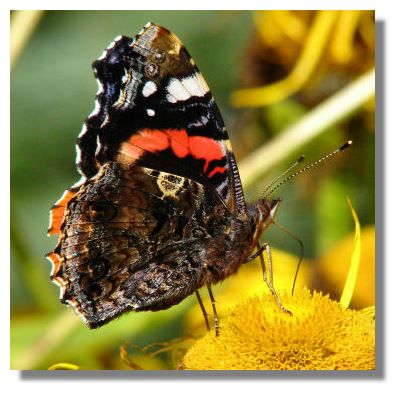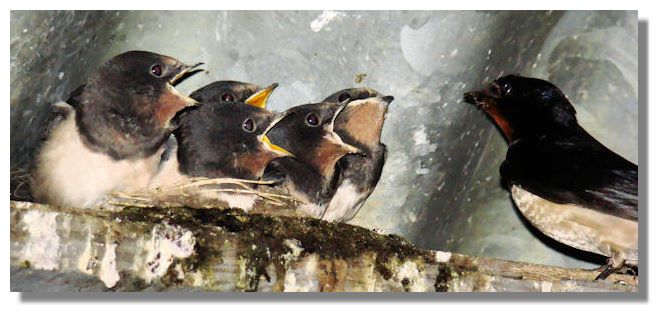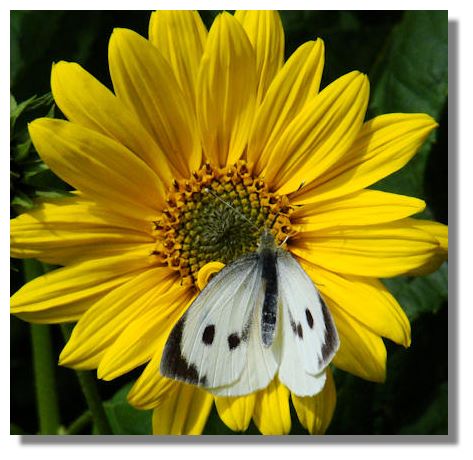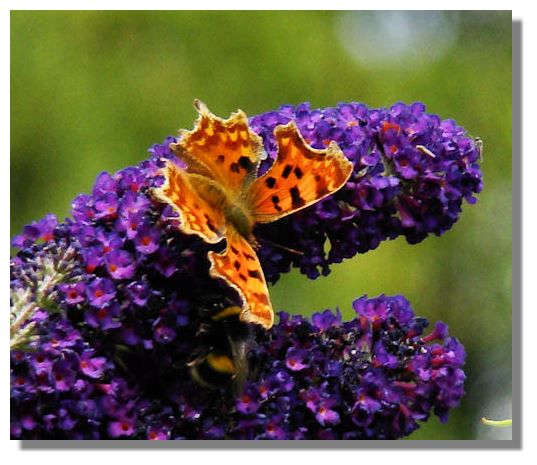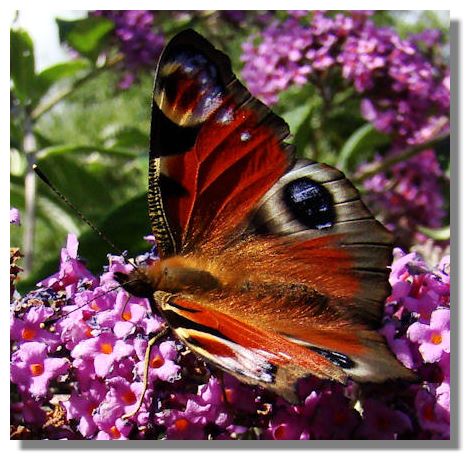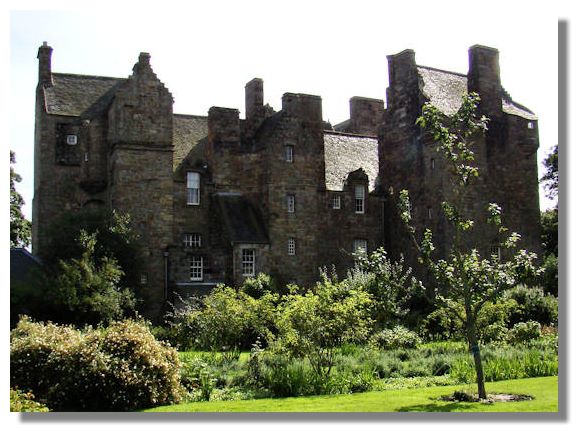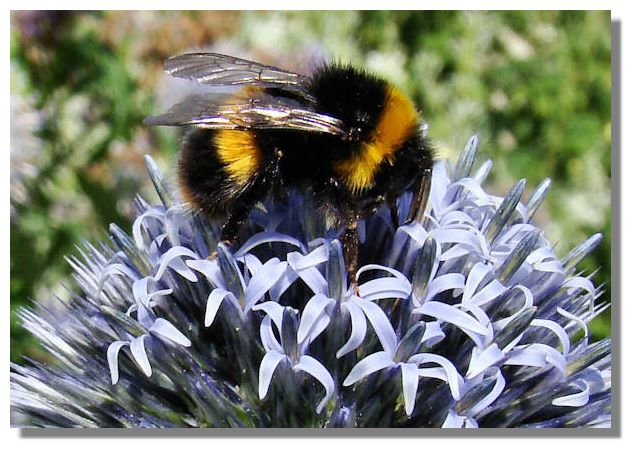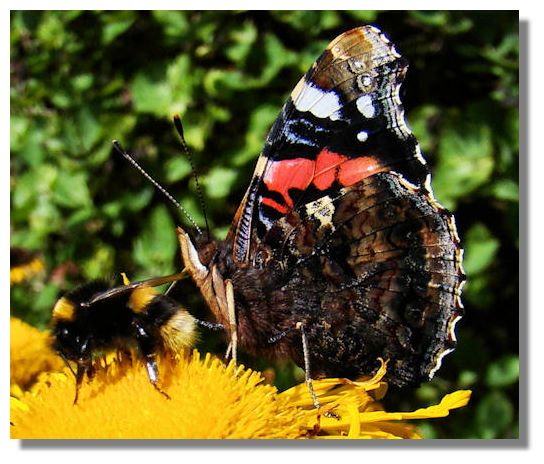For the last few weeks the mallards have been moulting and flightless and have looked very bedraggled. Now, at the end of August, the new winter coat is in place and this mallard looks very pleased with the result!
With her head twisted right round, this mallard at Drumpellier Country Park can preen her new feathers to perfection!
One of the great advantages of growing roses is the succession of blooms they produce throughout the summer. These ones were photographed at Kinross House, overlooking Loch Leven and its castle.
Unlike the mallards (above) which are "dabbling ducks", this tufted duck is a diver, swimming under water to feed. When it comes back to the surface, water droplets can reamin on its feathers for a while, as in this picture.
We tend to take the common starling for granted and it is only when you look closely that you see what brilliant markings this bird has. This is a young bird, just coming out of its juvenile plumage.
I try to attract small birds to my garden, with seed and nut feeders and even coconuts filled with a peanut and seed mixture. But some birds are less welcome than others - the pigeons just hoover up any seed thrown on the ground and so do the crows and magpies. But one bird I hope not to see again is this young sparrowhawk. It is a skilled predator and is looking quite smug as it has just snatched an unsuspecting Blue Tit. Fortunately, the small bird is invisible under the claws and the grass. I know that raptors have to feed - but would they please just not do it in my garden? I may say that shortly after the sparrowhawk had left, the feeders and branches will filled once again with small birds - unperturbed and looking for a snack of nuts and seeds.
This photo was taken during a sunny spell from Lyle Hill, a well-known vantage point above Gourock. The Firth of Clyde and some of the hills/mountains of Argyll can be seen in the distance. Lyle Hill has a monument in the form of the Cross of Lorraine (a vertical line, crossed by two smaller horizontal bars) which was the symbol of Joan of Arc. During World War II, the cross was adopted as the official symbol of the Free French Forces (French: Forces Françaises Libres, or FFL) under Charles de Gaulle. Free French naval vessels sailed from the Firth of Clyde to take part in the Battle of the Atlantic, and it also recalls the loss of the Maillé Brézé, which blew up at the Tail of the Bank.
Looking like a demented thistle, the Globe Artichoke (Cynara Cardunculus) is a perennial which originated in the Mediterranean and North Africa. Each of the flowerheads has numerous slender florets which protrude above the spiny bracts. They can be over two inches across.
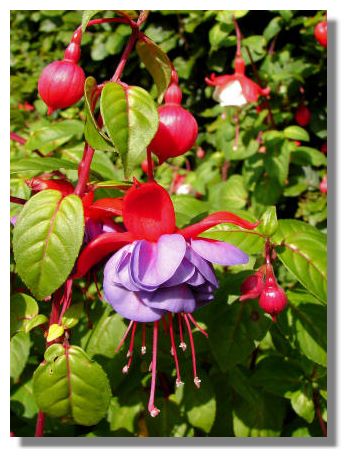
The flowers of the Fuschia are often compared to ballerinas but this variety growing in my own garden looks more elephantine that sylph-like!
The branches of these hydrangeas at Finlaystone Country Estate, on the border between Inverclyde and Renfrewshire, droop under the weight of the huge white blooms.
This colourful Painted Lady butterfly was feeding on some Knapweed on the banks of the river Forth at Stirling. Most of the Painted Lady butterflies we see are migrants from the Mediterranean.
This Red Admiral was on a ligularia flower in the walled garden at Culzean Castle in Ayrshire was the first one I had seen this year - and it wasn't for the want of trying. This Red Admiral refused to unfold its wings as it was busy feeding, but that meant that the interesting under-wing markings were there to be photographed.
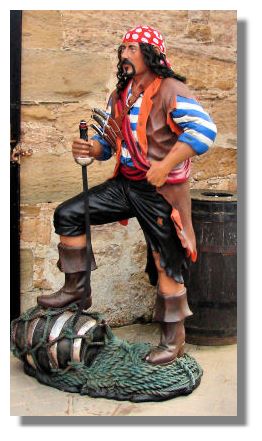
Historically, Culzean and the Ayrshire coast were involved with smuggling - the bays, cliffs and caves were useful to the smugglers. So the National Trust has placed this life-size statue outside the souvenir shop.
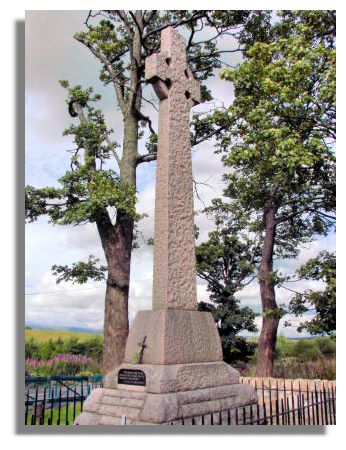
In August 1305, at Robroyston near Glasgow, William Wallace was captured by Sir John Menteith and handed over to the English authorities to be taken off to London and his cruel death. This memorial was erected in 1900 to mark the spot where he was captured. There are a number of inscriptions round the base of the monument. One Latin quote reads "Dico tibi verum, libertas optimum rerum, nunquam servili sub nexu, vivito fili" which translates as "I tell you the truth, the best of all things is freedom, never son, live under the bonds of slavery". It was said to have been taught to William Wallace in his boyhood when he was being educated at Paisley Abbey.
When it was first put up, the monument was isolated in farmland. These days, the memorial is surrounded by the urban sprawl of Glasgow. A recent housing estate (named by the developers as "Wallecefield") is just over a low fence from the monument. So it is surprising that the small replica sword is still surviving!
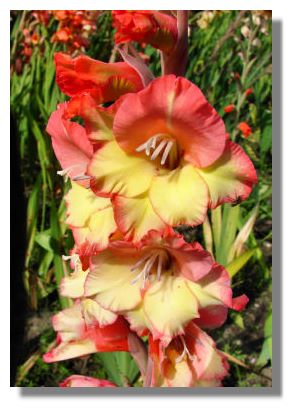
Culzean Castle's gardeners put on a terrific display of colour every year, not just with the herbaceous borders, but also with annuals and rows of dahlias, gladioli and sunflowers in all sorts of colours and hues. This gladioli was one of many dancing in the sunshine.
If you count the number of swallow chick beaks pointing towards the parent, you will see that there are five hungry mouths to feed. This is probably the second brood that this swallow and its mate will be rearing this summer. They will have to work hard to fatten up their chicks in a comparatively short time - before they all depart on the 6,000 mile journey to over-winter in southern Africa.
In a year when garden butterflies have been almost non-existent, it's the small white varieties that seem to have survived best - partly because they continue to fly in dull, cool weather. This picture, however, is of a "Large White" feeding on the flower of Heliopsis.
The Comma butterfly declined dramatically in Britain in the 19th century and by 1920 there were only two sightings in the UK. It has since staged a dramatic come-back, mainly in the south of England. But a few have been seen in Scotland in recent years, mainly in the Scottish Borders and around in the countryside round Edinburgh. But the numbers reported to the Butterfly Conservation Scotland each year of this orange and brown species, with its ragged wing edges, have struggled to reach double figures. So it was exciting to see one in the grounds of Scone Palace in Perthshire last week. What made it particularly pleasing was that I photographed a Comma here in April 2007, so it looks as though some are surviving in this area.
The poor, wet weather this summer has meant that even the butterflies seen in appreciable numbers in normal years have been hard to find. But those that survived last winter must have been successful in laying eggs (usually 500 at a time) in the spring - otherwise this fine Peacock, with its large red wings, black markings and distinctive eyespots on the tips of fore and hind wings, would not have hatched out to appear in the summer. Once again, this fine specimen was one of many photographed in the grounds of Scone Palace.
The first record of Kellie Castle in Fife dates as far back as 1150 when Malmure, thane of Kellie, witnessed a charter from King David I. By 1266 Kellie had passed to the Siward family (who had earlier come from Northumbria and assisted King Malcolm "Canmore" to overthrow Macbeth). Richard Siward's daughter signed over the estate to a relative, Walter Oliphant and that family lived in Kellie for 250 years. During that time, additional apartments were added to the original tower house. The castle is now owned by the National Trust for Scotland. Unlike many a grand castle it looks like a family home - with toys and a rocking horse in the nursery. There is a walled garden and the Trust has replanted this to be a charming Scottish Kitchen garden.
Here is a busy bee seeking out nectar from the globular flower cluster of a tall Echinops - the globe thistle. The flowerheads are around 1½ inches across, so there are plenty of individual flowers to be probed by the bee.
The underside of the wings of some butterflies can often be drab and uninteresting - looking more like a dried leaf, as it tries to disguise itself from predators. But the beautiful Red Admiral manages to combine camouflage with a striking, colourful design. Surprisingly, the butterfly and the bee are co-existing on the same Inula flower - often the butterfly will flick its wings to chase away any other insect.If you want to look back at other editions of these photos of Scotland week by week, there is an Index Page
